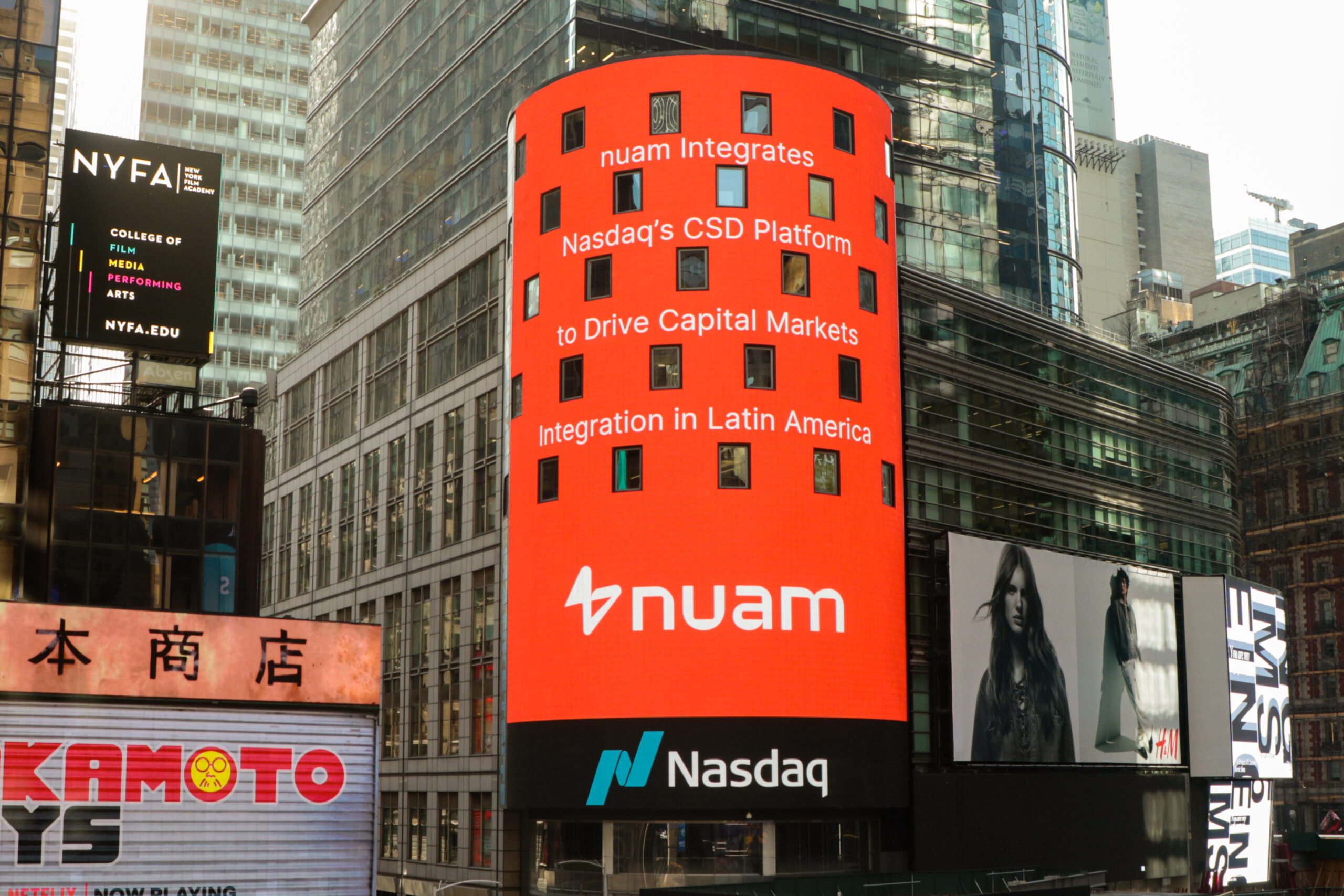The collaboration is intended to optimize post-trade processing for key Latin American exchanges.
 Exchanges companies Nasdaq and Nuam, created from the merger of the Santiago, Lima, and Colombia stock exchanges, are extending their technology partnership. This means that the central securities depositories (CSDs) of the three exchanges will adopt Nasdaq’s CSD platform in an effort to “optimize post-trade processing in the region,” officials say.
Exchanges companies Nasdaq and Nuam, created from the merger of the Santiago, Lima, and Colombia stock exchanges, are extending their technology partnership. This means that the central securities depositories (CSDs) of the three exchanges will adopt Nasdaq’s CSD platform in an effort to “optimize post-trade processing in the region,” officials say.
“The agreement expands Nasdaq’s existing relationship with Nuam, with the exchanges currently consolidating their trading infrastructures on Nasdaq’s platform to help attract global sources of liquidity. It also builds on Nasdaq’s longstanding technology partnership with Chile’s CSD, Depósito Central de Valores (DCV), one of the region’s most advanced CSD platforms,” according to the announcement.
The integrated post-trade infrastructure of Nuam “will benefit from a unified solution based on international standards, while greater interoperability across both trading and CSD infrastructure will reduce the costs and barriers associated with accessing the individual markets, increase liquidity, and enhance operational efficiencies across the three exchanges,” officials add.
“Having high technological standards is essential for providing security and confidence to investors, as well as expanding investment opportunities and access to new markets,” says Juan Pablo Córdoba, CEO of Nuam, in a prepared statement.
Nuam is “at the heart of Latin America’s extraordinary journey, with the region’s markets embracing modernization at a phenomenal rate. By adopting world-leading technology, they can attract international investors while ensuring they have the agility to incorporate innovative, new technologies to better serve the three markets and unlock new sources of revenue,” says Magnus Haglind, senior vice president and head of marketplace technology at Nasdaq, in a statement.
According to a recent Nasdaq survey, 84 percent of respondents say “they are keen to increase their investment in Latin America.” However, the survey also found “structural challenges that restrict flows and add to costs: 59 percent of respondents said that market structure issues impose limits on their investment flows. Specifically, fragmentation, processing errors, and a lack of standardization are hampering operations, with respondents seeking greater cohesion and automation to increase efficiency and improve market access.”
Need a Reprint?